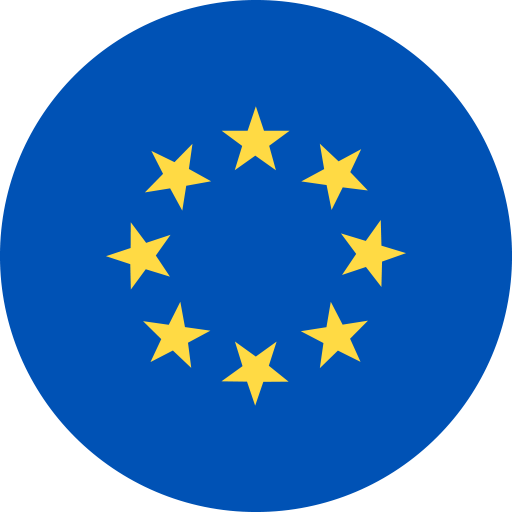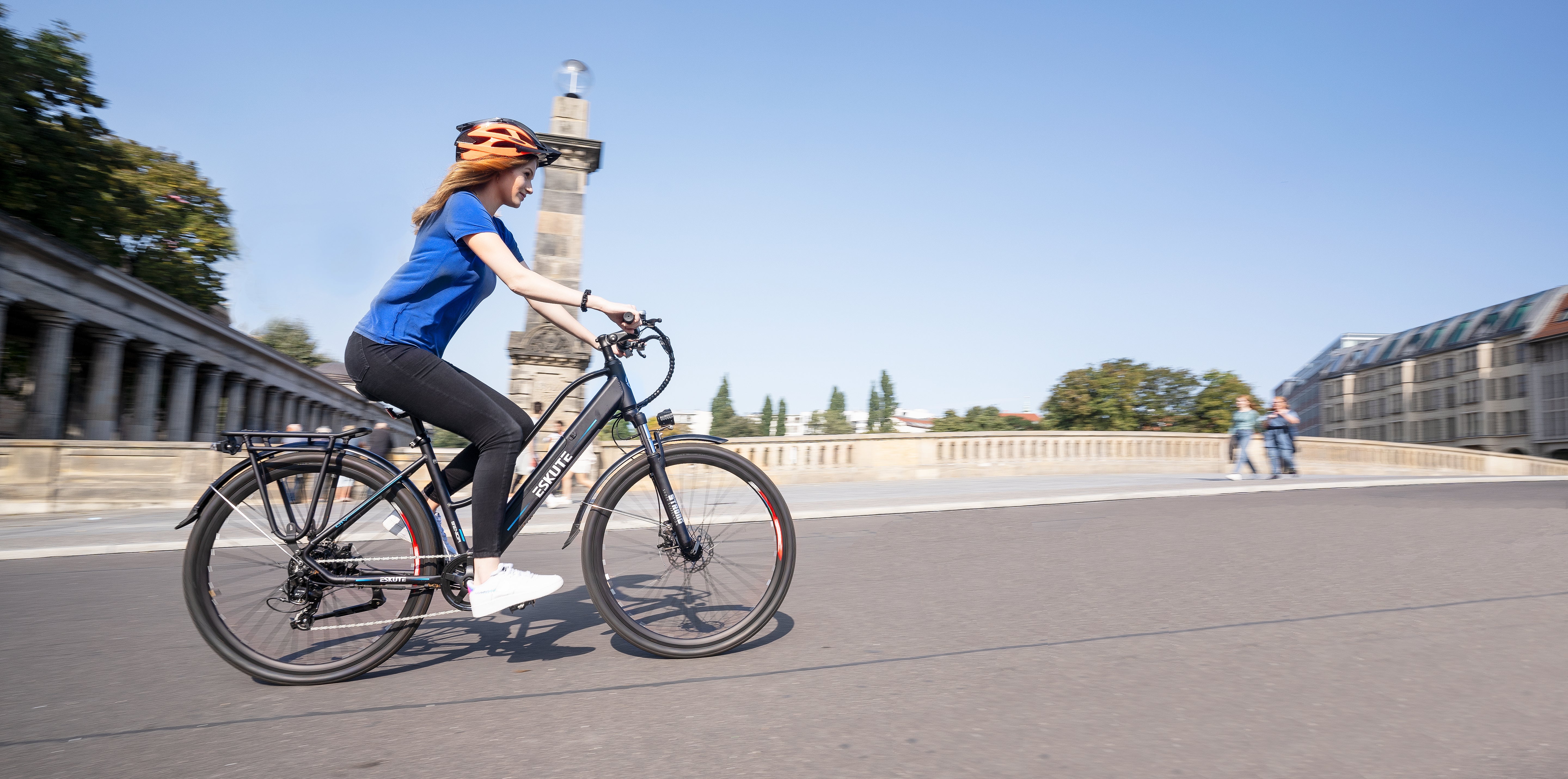Navigation
Whether you call it an e-bike or an electric bike, there's no better feeling than riding than the road with your hair flowing in the wind, knowing that you're single-handedly reducing your environmental impact by riding your zero-emission vehicle instead of driving a gas-guzzling motor vehicle.
But just like anything else in life, you'll need to learn the ins and outs of riding an electric bike first hand, which will eventually allow you to enjoy the experience for what it truly is.
Unfortunately, many myths and misconceptions surround e-bikes, commuting with them, and electric vehicles in general.
So to help you separate e-bike fact from e-bike fiction, we thought it'd be a great idea to put together the following guide.
Below, we're exploring 7 electric bike tips and tricks that are sure to help you improve your electric bike's range, braking and handling, and your overall rider experience.
#1 - Charging And Recharging Your E-Bike Battery
The battery is undoubtedly the most essential component that separates an e-bike from a traditional bicycle.
It's also one of the most expensive parts to replace when something does go wrong.
Therefore, it's worth knowing how to properly charge, recharge, and maintain your battery for optimal performance.

How long should you charge your e-bike?
Most electric bike battery packs can either be charged while directly mounted to the bike, or they can sometimes be removed and swapped out for charging.
The battery charger will likely have an indicator light that will either pulse or flash red while charging and then switch to solid green once fully charged.
When you first get your e-bike, make sure to give it a full charge according to the manufacturer's directions.
A fully charged will usually take somewhere between 8 to 12 total hours, ensuring you will fully energize your battery for that first trip.
Is it bad to leave my e-bike plugged in overnight?
Most people will tell you that lithium-ion batteries don't have "memory," meaning that they can be plugged in and charged at any time without causing any damage to the battery.
While this may be mostly true, it's best to err on the side of caution and avoid doing anything that could potentially ruin your battery.
So with that in mind, do your best to avoid letting your battery die completely. Not only do you not want to end up stranded, but letting your battery die completely can also possibly even reduce your electric bike's range.
At the same time, you should try to avoid leaving your electric bike plugged in for too long or plugging it in too often, which can potentially cause the battery to overheat while you're not watching it.
If you're unsure of how long your battery should take to charge, simply refer yourself to the manufacturer's instructions. Your e-bike manufacturer will be the best source of information on caring for and maintaining your battery correctly.
How does temperature affect my e-bike battery?
Finally, you'll also want to avoid exposing your e-bike's battery to extreme temperatures. Both extremely hot and cold temperatures can affect your battery in different ways.
Extreme heat and hot temperatures can cause the battery to heat up more than it should, which can cause burns or damage to your electric bike.
On the other hand, cold weather and sub-zero temperatures can impact your battery performance, resulting in lower speed capabilities and significantly reduced range. You'd better maintain electric bike in winter
Therefore, during the wintertime or when the weather is colder, you'll likely need to charge your electric bike more often than you would during the hotter summer months of the year.
#2 - Check Tire Pressure Before Riding An Electric Bike
If you've ever found yourself on the losing end of a flat tire, you already know how disappointing and frustrated it can be to end up stranded on the side of the road without any way to get a new tube for your tire.
That's why we highly recommend checking your tire pressure often and especially before any longer commutes.
Not only is it a safe thing to do, but checking that your tire pressure can also help maximize your e-bike's range.
It will also prevent your tires from wearing out prematurely, which any electric bike rider can appreciate.
How much air pressure should you have in your tires?
If you're riding a battery-powered bike in an urban environment, you'll typically want your tires inflated to somewhere between 80 and 130 psi. But for e-bikes specifically built for mountain riding, tires are usually rated for lower psi levels.
Keep in mind that all tires and riders have different specs and preferences for tire pressure. So there's always a bit of wiggle room.
But if you're unsure of how much air you should be putting in, make sure to check the product specs for the manufacturer's directions.
Softer Vs. Harder Tires: Which is better?
Softer tires tend to offer slightly more traction and grip, giving you better stability thanks to the increased surface area of the tire coming into contract with the ground.
This makes softer tires better for electric mountain biking or trail riding rather than zipping through traffic downtown.
On the other hand, harder tires will cause you to feel slightly less stable while riding, simply because of the tire's reduced surface touching the pavement. However, you will have much better control and maneuverability when riding at higher speeds.
That's why you'll often see electric bikes designed for high-speed racing equipped with much thinner, more aerodynamic tires.
#3 - Pedaling When Going Uphill - Pedal Assist
If you're in the early stages of shopping around or looking for an e-bike, you should know that some electric bikes are designed with pedal assist features, offering you the perfect push you'll need for going up hills and pedaling up steeper inclines.
Not to mention when you're traveling long distances for those pesky work commutes, having the extra push from your electric bike and its motor is exactly what you need.
What is e-bike pedal assistance?
Although pedal assist is only available on specific e-bike models, those with this feature should understand the difference between a pedal-assisted e-bike and a throttle-driven e-bike.
While you can drive some electric bike models without pedaling at all, pedal assistance is an excellent feature for those who still want to feel the burn from pedaling their bike around but still want the option of having a little extra help from to time.
Alternately, a throttle-driven e-bike will either pedal your bike manually or engage the throttle, which will drive your motor directly.
#4 - Lowering Your Center of Gravity
When you're out riding around town on an e-bike, it can sometimes be fun to stand up and feel the wind rushing against your face while you lean side to side, taking in all those feelings of freedom and total control that come with riding an e-bike.
But did you know that standing up, leaning, or turning excessively can put a drain on your range?
Electric bikes have a lower center of gravity due to the weight of their motor and battery.
When you stand up or lean, riders can shift their electric bikes' center of gravity higher, which leads to less stability and less control over the cycle.
Plus, when you stand up on your bike, you'll create a much larger surface, which means that your bike, its battery, and the motor will all have to work harder to propel the vehicle forward.
What's the best way to carry cargo on your e-bike?
If you're either a bike courier or just someone who likes running errands with their bike, lowering your center of gravity is essential, especially if you plan to carry any cargo with you.
That's why you'll also see courier bikes equipped with saddlebags mounted lower down on the bike's frame, which allows the rider more stability and better balance due to a lower center of gravity.
Or, for those that can't fit their cargo into a saddlebag, it's simply better to have any load mounted at the back of the bike, behind your seat, rather than the front, which will also help keep your center of gravity a bit lower.
In the end, just remember that any extra weight you carry with you on your e-bike will affect your center of gravity, as well as your overall control and maneuverability while riding.
So do your best to keep a lower center of gravity!
#5 - Don't Pedal When Cornering And Entering Turns
There's no doubt that e-bikes are extremely fun to ride, especially since they can allow riders to reach speeds that they couldn't go on their own.
But it's still super important to keep rider safety in mind at all times.
No matter what, whether you're a first-time rider or a hardened electric bike riding veteran, failure to follow safety rules and laws can lead to severe crashes, injuries, and potentially fatal accidents.
Scrapping your pedals while cornering
One well-known problem in the electric bike world is that many first-time and inexperienced riders end up damaging their bikes.
Some even end up causing crashes by scuffing the ground with their pedals on the ground while riding around corners.
Riders can easily prevent this if a bit of care, caution, and forethought are taken before getting on an electric bicycle.
How can I avoid this?
The best practice is to avoid pedaling while entering, turning, and exiting a corner and keep your pedals in the correct position.
The pedal on the inside of the turn should be entirely up at the noon position, while the pedal on the outside of the corner should be at the six o'clock position.
If you keep your feet in these positions, you shouldn't ever have an issue with scrapping the ground in this manner.
And then, obviously, as you exit your corners and are no longer leaning into it, you can resume pedaling your little heart out.
Don't forget: e-bikes are more powerful than pedal bikes
While you might be tempted to think that riding an e-bike is exactly like riding a traditional bike, you'd be wrong.
Because e-bikes have the extra power to propel you forward, you'll likely be able to reach higher speeds than you would while pedaling on your own. Although this can be loads of fun, impacts can have severe and potentially fatal implications at higher speeds.
It might take first-time riders a bit of time to get used to doing this. But doing so truly goes a long way in keeping you safe and sound while riding your electric bike.
Plus, you won't have to deal with ugly, scratched-up pedals or having to tell your friends that you've already damaged your brand new SuperDelite Mountain on your first ride.
#6 - Brake Lightly And Evenly
Not only will braking too hard or often cause premature wear to your e-bike brake pads, but you'll also reduce your electric bike's overall range since you'll be using more energy to regain speed after you brake.
Therefore, it's best to dry and use your brakes only when necessary.
When you see a stop sign or need to stop, try to slowly reduce your speed by coasting and applying your brakes only as hard as required to reach a smooth stop.
The harder you brake, the harder you'll be on your electric bikes' brakes and other components.
And for those riding throttle-driven e-bikes, you'll be adding that extra drag on your range as well.

How long will my e-bike brakes last?
Your rim brakes should last you several thousand miles or kilometers. But every rider's case will vary since everyone rides differently.
Higher-end rim brakes are often said to last anywhere between 3,000 to 6,000 miles, or roughly 5,000 to 10,000 kilometers.
But again, if you ride hard or frequently, there's a good chance that you may go through brakes more often than that.
#7 - Follow the rules of the road
Whether you're on a traditional bike or an e-bike, bike riding requires a great deal of safety knowledge and precaution.
Not only do you need to make sure that you're wearing the proper safety equipment, such as your helmet and something reflective, you also need to know your local electric bike laws and regulations and follow the rules of the road at all times.
When riding bikes and electric bikes, riders are often put close to moving vehicles and other obstacles that can become extremely dangerous when proper precautions and care aren't taken.
Always make sure that you're in complete control of your bike while riding, and never ride in any manner that can put yourself or those around you at risk.
Be smart, be safe, and most of all, have fun with Eskute Electric Bike!










1 comment
Sylas Salamanka
An article that has benefited a lot
Leave a comment
This site is protected by hCaptcha and the hCaptcha Privacy Policy and Terms of Service apply.